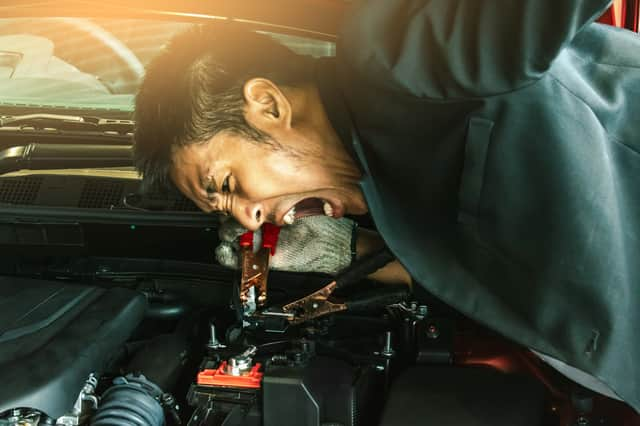Danger signs of recharging a flat car battery


Motorists have been warned of the risks in recharging flat car batteries as Britain prepares to get back to work after lockdown.
With millions of UK cars left idle on driveways for weeks, it’s believed record numbers of drivers could face difficulties when it comes to starting their engines.
Advertisement
Hide AdAdvertisement
Hide AdIndustry experts estimate that as many as one in 20 motorists could find their vehicles refuse to start when they get back behind the wheel for the first time.
Drivers are urged to do research into the right sort of battery charger for their vehicle before buying one. The wrong sort of charger could cause permanent damage or the risk of explosion.
Batteries should be moved out of an engine before being recharged. Be careful as they contain toxic acid and are heavy.
It’s best to consult a mechanic before jump-starting a car but with garages closed due to lockdown, here are some tips for those attempting to get their vehicle started themselves for the first time:
Advertisement
Hide AdAdvertisement
Hide Ad1. Park car with live battery alongside car with run down battery, turn off engine and pop open both bonnets.
2. Attach red cable to the positive terminal on dead battery.
3. Attach other end of red cable to positive terminal on live battery.
4. Attach black cable to negative terminal on dead battery.
Advertisement
Hide AdAdvertisement
Hide Ad5. Attach other end of black cable to the negative terminal on live battery.
6. Start engine of car with live battery.
7. Start engine of car with dead battery - it should now jump into life.
8. Disconnect all cables, taking care to do so in reverse order.
9. Close bonnets and take jump started car for a 45-minute drive at above 1,000 revs per minute to fully charge the battery.
The report was compiled by StressFreeCarRental.com
(Photo by Shutterstock).